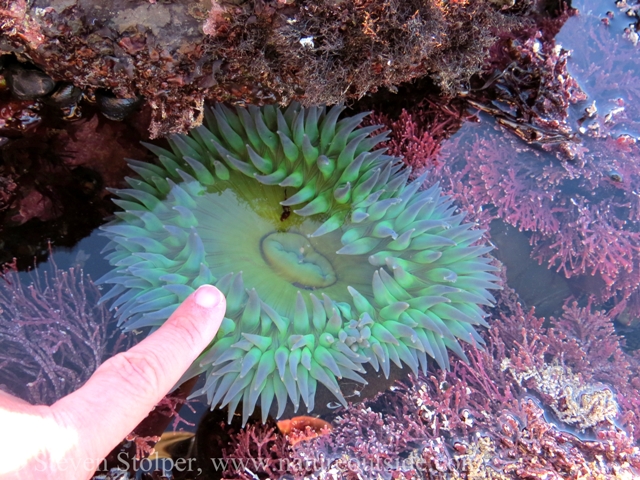
The coast offers special hikes unlike those in the mountains or desert. Chief among them is “Tide Pooling.” These hikes along rocky coastlines allow you to gaze into the clear pools of the intertidal zone. In this zone the seabed is exposed to the air at low tide and submerged at high tide.
It’s wildlife watching at its finest! Birds, marine mammals, fish, crabs, anemones, barnacles, chitons, mussels, sea stars, shrimps and snails are on colorful display. I always recommend to people living within driving distance of a coast that they visit the tidepools at least four times a year. It gives you an exciting opportunity to explore and makes a wonderful change-of-pace hike.
Packing a camera and a thermos of hot chocolate, I set out for the Fitzgerald Marine Reserve in beautiful Half Moon Bay, California. It was apparent that I wasn’t the only one lured by the beautiful weather and the afternoon minus tide.
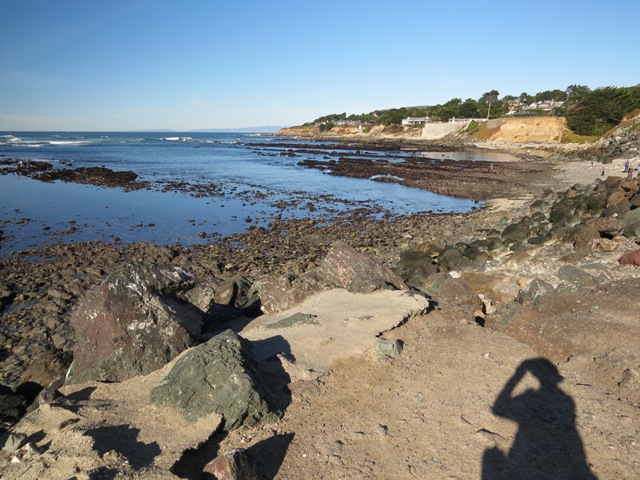
Surveying the Fitzgerald Marine Reserve
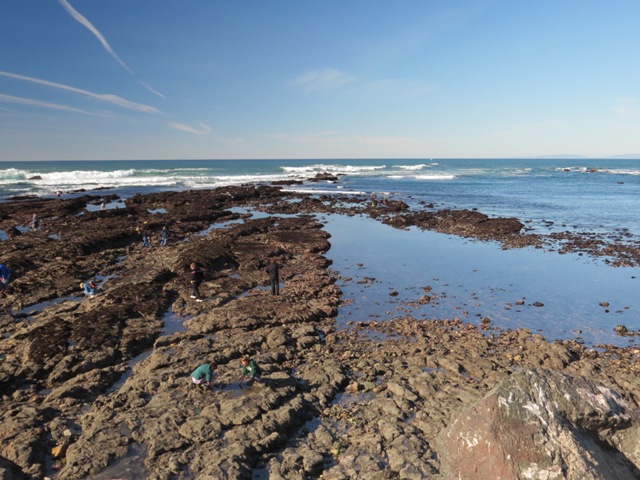
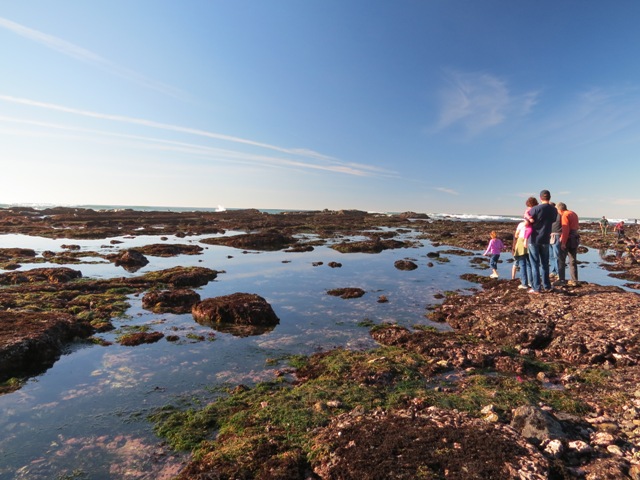
Visitors enjoying the tidepools at the Fitzgerald Marine Reserve
You do need to take care, as many of the rocks are wet and slippery. Also heed the old adage, “Never turn your back on the ocean!”
I did not expect to see many sea stars. As you may have heard, there is a massive die-off of sea stars occurring on the West Coast of the United States. The affected area is huge, stretching from Alaska through California. The cause is still a mystery, but bacteria are suspected. Like past die-offs, there seems to be a correlation with warmer water temperatures. Here is a link to some good information and pictures about Sea Star Wasting Syndrome.
Most affected are ochre stars. These gorgeous purple sea stars have pretty much disappeared from the area I hiked through. However, I did see one that was about a foot in span.
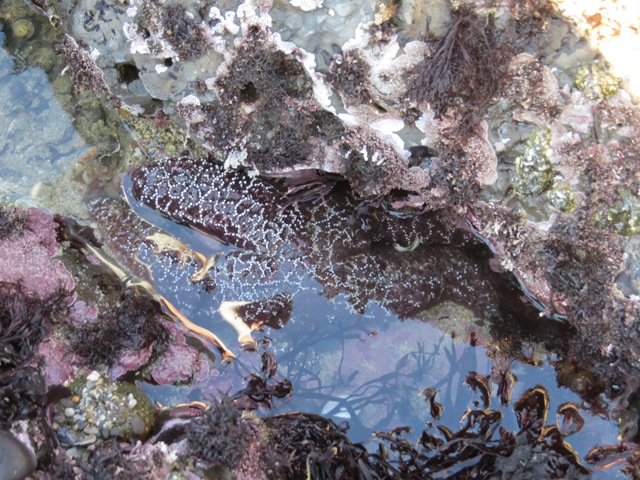
Unlike the tough exterior of the Ocher Stars, Leather Stars are “soft and squishy” to the touch. This one is also about a foot wide. Because it is in deeper water, the picture is a bit cloudy.
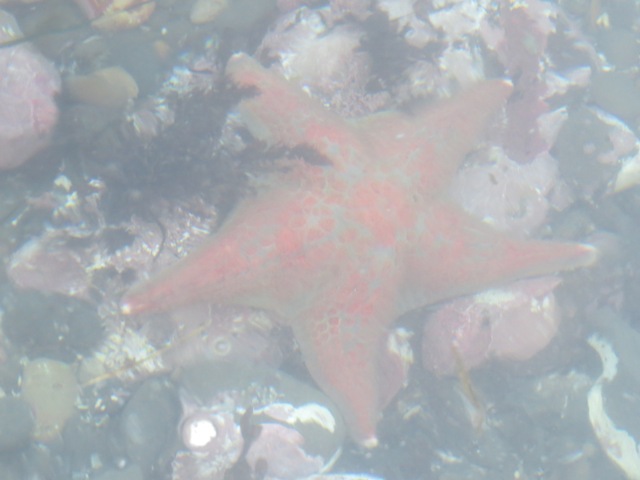
There were tremendous mussel beds. Here is a small sample:
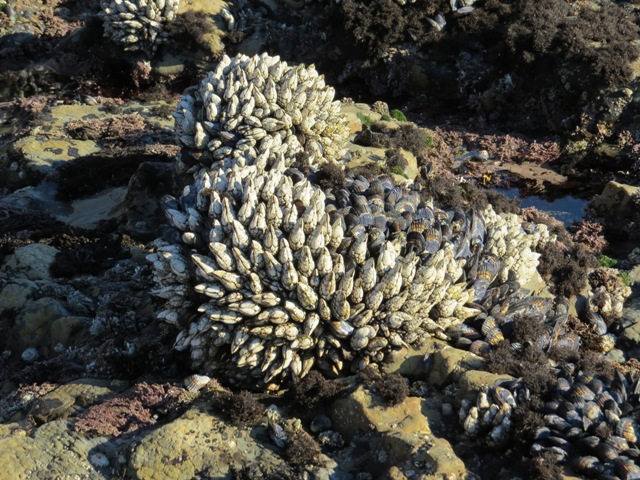
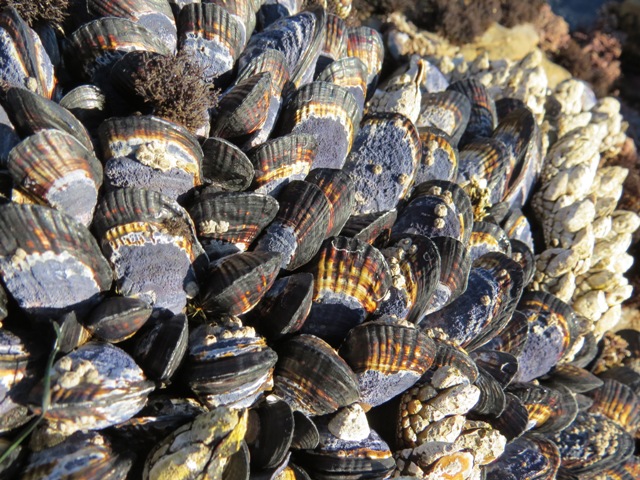
Anemones were present in great numbers. Their tentacles have nematocysts, harpoons used to capture prey. But they usually can’t penetrate human skin and are not considered venomous. For fun, I gently touch a tentacle. The action of the nematocysts feels like the anemone is grabbing hold of my finger. In many cases, the anemone then collapses inward in reaction to the touch. This one was so huge, it did not contract as I stroked some of its tentacles.

Giant Green Anemone (Anthopleura xanthogrammica)
In the next post, I will cover the amazing marine mammals and crustaceans I saw:
For fun facts and useful tips, join the free Bushcraft Newsletter.



Beautiful photographs. I used to love to go tide pooling.
Thanks, Gene! Tide pooling is really an amazing experience.